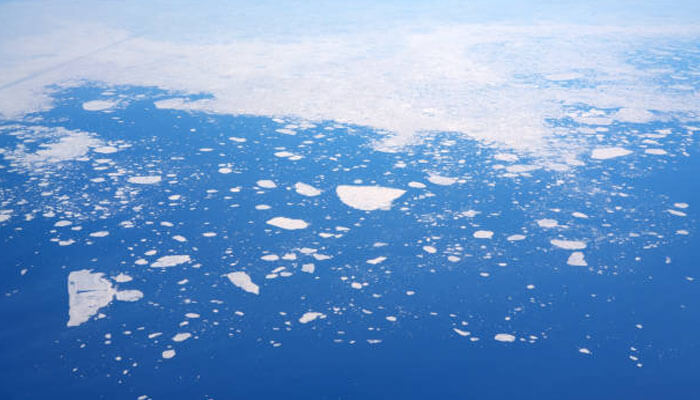The effect of global warming is visible now, especially in the polar regions where ice has started melting rapidly. NASA has observed these changes and made a time-lapse video of melting ice in the Arctic Sea over the last three decades.
“What we’ve seen over the years is that the older ice is disappearing,” said Walt Meier, a sea ice researcher at NASA’s Goddard Space Flight Center in Greenbelt, Maryland. “This older, thicker ice is like the bulwark of sea ice: a warm summer will melt all the young, thin ice away but it can’t completely get rid of the older ice. But this older ice is becoming weaker because there’s less of it and the remaining old ice is more broken up and thinner, so that bulwark is not as good as it used to be.”
There has been inconsistency in ice thickness over the entire Arctic region and scientists have developed estimates of sea ice age and tracked their evolution from 1984 to the present. Now, a new NASA visualization of the age of Arctic sea ice shows how sea ice has been growing and shrinking, spinning, melting in place and drifting out of the Arctic for the past three decades.
“Ice age is a good analog for ice thickness because, basically, as ice gets older, it gets thicker,” Meier said. “This is due to the ice generally growing more in the winter than it melts in the summer.”
In the early 2000s, scientists at the University of Colorado developed a way to monitor Arctic sea ice movement and the evolution of its age by using data from a variety of sources, but primarily satellite passive microwave instruments. These instruments gauge brightness temperature: a measure of the microwave energy emitted by sea ice that is influenced by the ice’s temperature, salinity, surface texture and the layer of snow on top of the sea ice.
Each floe of sea ice has a characteristic brightness temperature, so the researchers developed an approach that would identify and track ice floes in successive passive microwave images as they moved across the Arctic. The system also uses information from drifting buoys as well as weather data.
“It’s like bookkeeping; we’re keeping track of sea ice as it moves around, up until it melts in place or leaves the Arctic,” said Meier, who is a collaborator of the group at the University of Colorado and the National Snow and Ice Data Center in Boulder, Colorado, the center that currently maintains the Arctic sea ice age data.
Ice in motion
Every year, sea ice forms in the winter and melts in the summer. The sea ice that survives the melt season thickens with each passing year: newly formed ice grows to about 3 to 7 feet of thickness during its first year, while multi-year ice (sea ice that has survived several melt seasons) is about 10 to 13 feet thick. The older and thicker ice is more resistant to melting and less likely to get pushed around by winds or broken up by waves or storms.
 Arctic sea ice has not only been shrinking in surface area in recent years; it’s becoming younger and thinner as well. In this animation, where the ice cover almost looks gelatinous as it pulses through the seasons, cryospheric scientist Dr. Walt Meier of NASA Goddard Space Flight Center describes how the sea ice has undergone fundamental changes during the era of satellite measurements.
Arctic sea ice has not only been shrinking in surface area in recent years; it’s becoming younger and thinner as well. In this animation, where the ice cover almost looks gelatinous as it pulses through the seasons, cryospheric scientist Dr. Walt Meier of NASA Goddard Space Flight Center describes how the sea ice has undergone fundamental changes during the era of satellite measurements.

